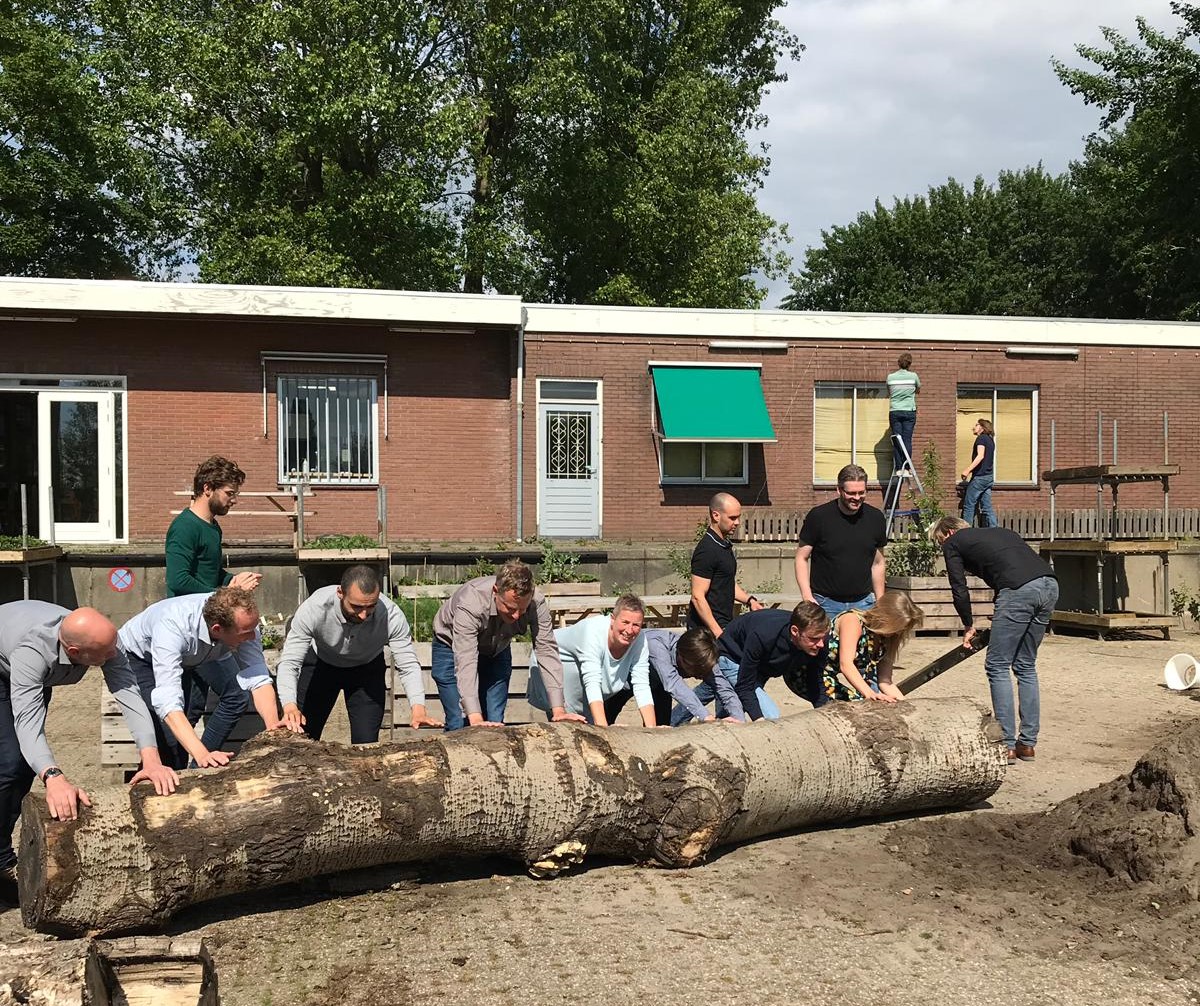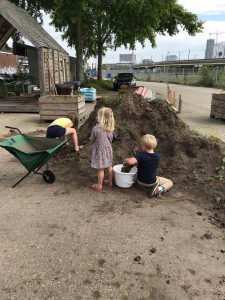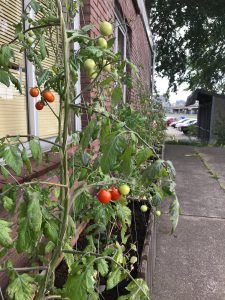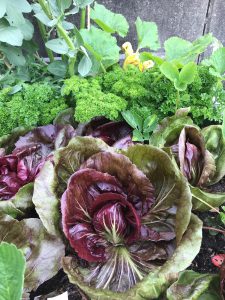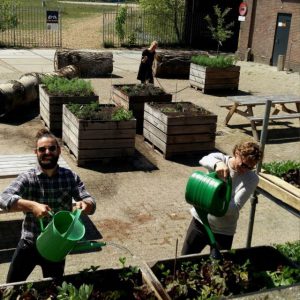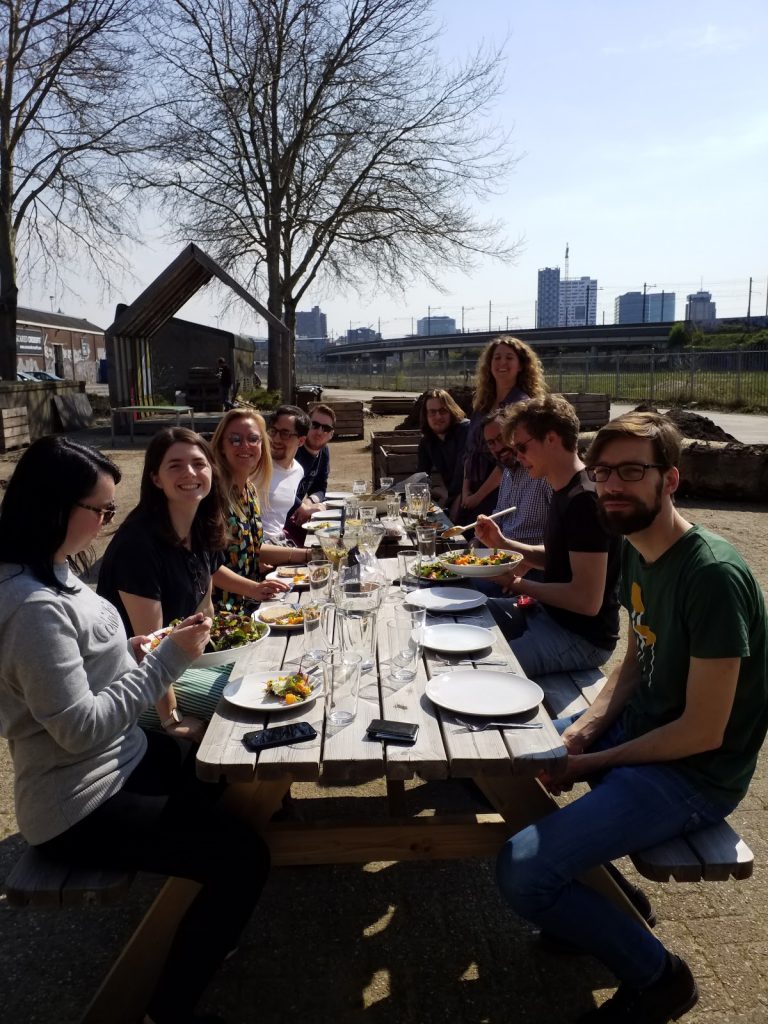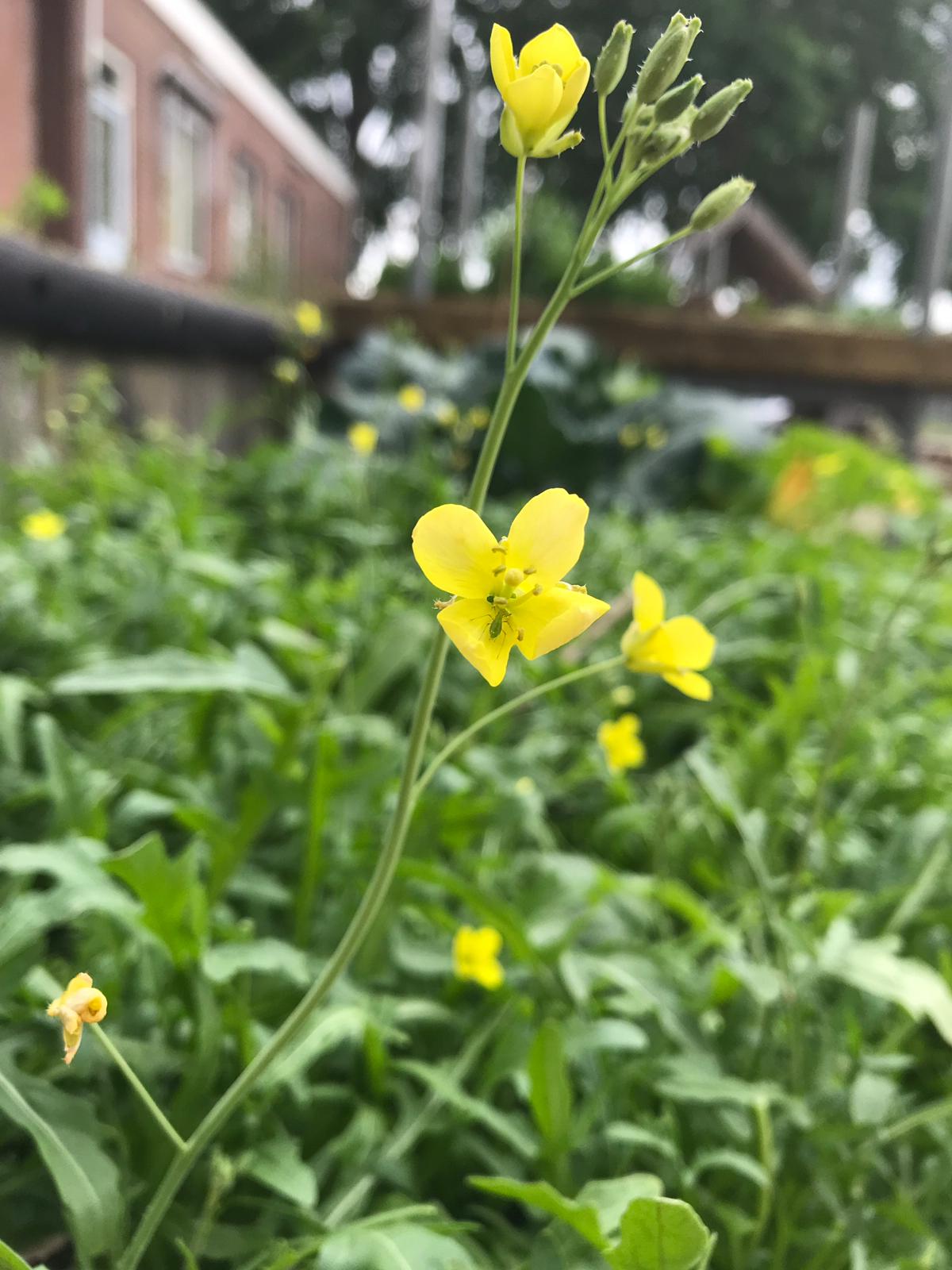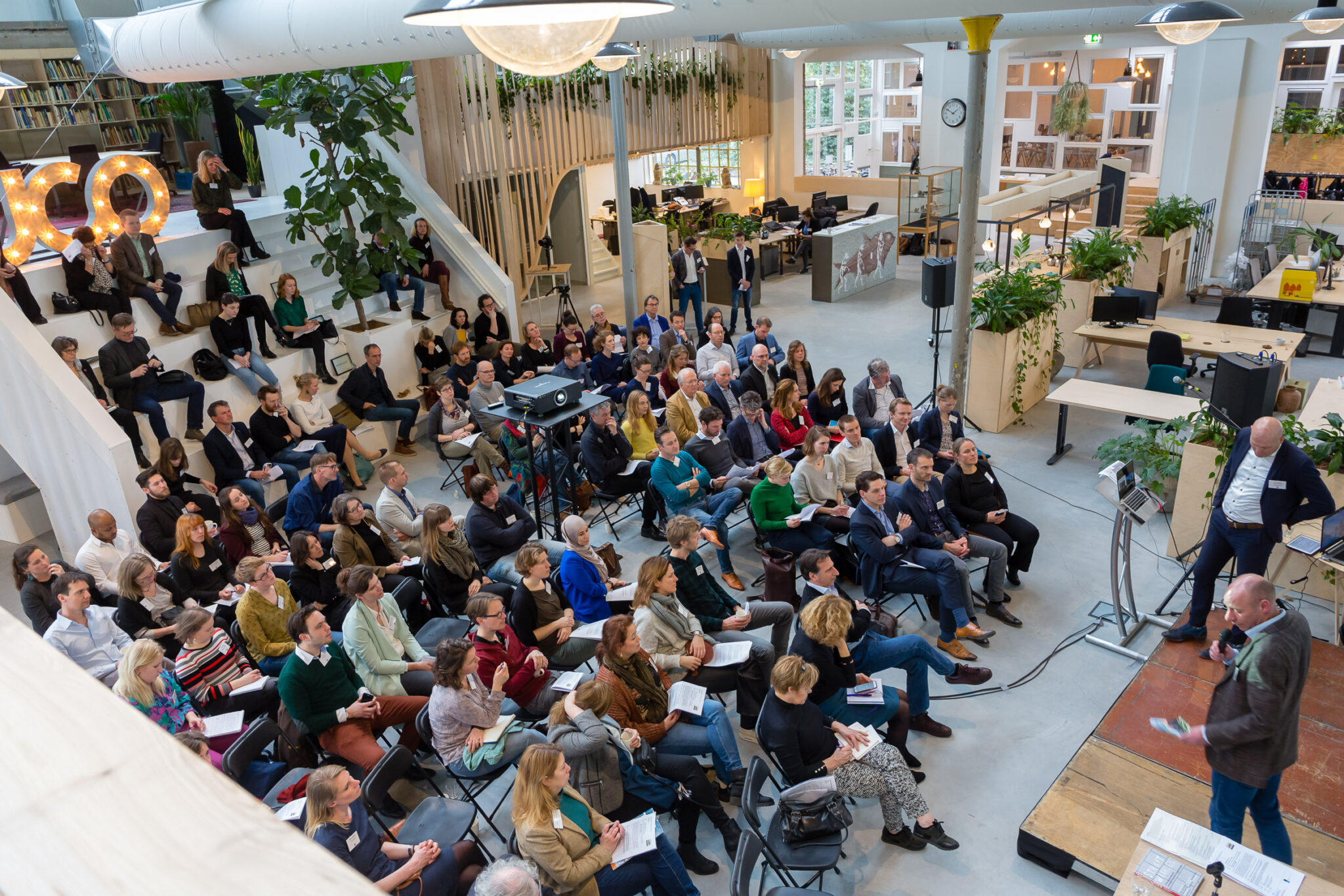Utrecht Community consists of more than 25 organizations that all contribute to integrated sustainability from their own discipline. In this blogpost, one of UCo’s communitymembers shares its’ knowledge and ideas on a specific topic.
Written by David de Grauw from abcnova and Jochem Gerritsen from Infloat
In vergelijking met andere markten (zoals de aandelenmarkt) is de bouw- en vastgoedmarkt relatief traag. Nieuwe ontwikkelprojecten nemen vaak een paar jaar in beslag. Daarnaast zijn er bij vastgoedontwikkelingen — van het afgraven van zand tot aan het verkopen van vastgoed — veel verschillende partijen betrokken. Door deze uitgestrekte keten druppelen financiële middelen langzaam van een belegger naar leveranciers.
Dit is dan ook een van de voornaamste risico’s bij langdurige projecten. Juist door het grote aantal ketenpartners is liquiditeit voor deze partners niet altijd gegarandeerd. Kan nieuwe technologie hier het risico verminderen? Om deze vraag te beantwoorden geven we een voorbeeld waarbij we niet de hele keten doorspitten, maar ons beperken tot drie partijen: namelijk de belegger, de ontwikkelaar en de aannemer.
Vastgoedontwikkeling – een simpel voorbeeld
Een ontwikkelaar heeft een tender gewonnen voor een nieuw sportcentrum. Om zelf risico’s af te dekken gaat de ontwikkelaar op zoek naar een belegger. Deze belegger staat financieel garant voor de realisatie van het project. Er worden termijnen overeengekomen naar de stand van het werk. Dit betekent dat de belegger termijnen vrij laat vallen zodra bepaalde werkzaamheden zijn afgerond. Zodra het project van start gaat, betaalt de ontwikkelaar adviseurs en aannemer(s) vanuit de middelen die vrijvallen bij de belegger.
De liquiditeit van het project is dus cruciaal. De ontwikkelaar moet tijdig de aannemer betalen, anders loopt deze in het ergste geval weg. In Nederland hanteren we op facturen vaak 30 dagen als betalingstermijn. Dus in een extreem geval kan het voorkomen dat aannemer 1 a 2 maanden moet wachten op zijn inkomsten. Met name voor kleine aannemers is dit een groot risico.
Hoe brengt nieuwe technologie hier verandering in?
Door nieuwe technologieën toe te passen kan dit liquiditeitsprobleem mogelijk opgelost worden. Nieuwe innovaties kunnen het werk efficiënter en gemakkelijker maken. Een goed voorbeeld hiervan is blockchain-technologie. Maar wat is dat eigenlijk?
Blockchain is een gedistribueerde en onveranderlijke database waarin data kan worden opgeslagen. Elke partner in de keten heeft toegang tot deze database, kan de data inzien en toevoegen, zonder de bestaande data te kunnen wijzigen. Op deze manier ontstaat er ‘één bron van waarheid’, waarbij de data dus niet in afzonderlijke databases hoeft worden opgeslagen. Wat blockchaintechnologie in dit voorbeeld interessant maakt, zijn de zogeheten smart contracts. Dit zijn stukjes code die automatisch worden uitgevoerd op basis van vooraf vastgestelde regels. Zo kan een smart contract bepaalde data als input hebben, deze data vergelijken met een voorwaarde, en op basis van de uitkomst een actie ondernemen.
In het geval van het sportcentrum werkt dat als volgt. De belegger zet zijn of haar financiering om in een ‘digitale euro’: digitale munten die exact evenveel waard zijn als een euro. Deze digitale euro’s worden dan vastgezet in een smart contract. Dit smart contract ontvangt data (informatie) over de status van de bouw van het sportcentrum. Vooraf is vastgesteld dat wanneer de aannemer het dak op het sportcentrum heeft gezet, er een bepaald deel van de financiering moet worden vrijgegeven aan de aannemer, en een deel aan de ontwikkelaar. Zo wordt het hele project opgedeeld in mijlpalen, waarbij het smart contract automatisch nieuwe termijnen vrijgeeft aan de betrokkenen.
Wat zijn de voordelen hiervan? Door gebruik te maken van blockchain en smart contracts, wordt de gehele keten transparanter aangezien alle partijen de vastgelegde data in de blockchain, als het smart contract in kunnen inzien. Daarnaast bevordert deze manier van werken de liquiditeit voor de verschillende partijen. Zo hoeft de aannemer in dit voorbeeld niet meer 30 of zelfs 60 dagen te wachten op betaling van de factuur. In plaats daarvan wordt de aannemer gelijk betaald naar de stand van het werk en kan hij beter zijn verplichtingen aan onderaannemers voldoen.
Innovaties in vastgoed: Fictie of Realiteit?
Het is duidelijk dat dit soort innovaties manieren van (samen)werken in de bouw- en vastgoedmarkt kunnen verbeteren. Toch is dit nog geen realiteit. Aan de ene kant zijn investeringen vooraf noodzakelijk om deze voordelen te realiseren. Zo moeten de betrokken partijen de smart contracts zorgvuldig opstellen, zodat deze goed bij het project passen. Daarnaast moeten de verschillende partijen de betalingen in deze digitale euro’s kunnen verwerken. Aan de andere kant is de adoptie van blockchain-technologie, in zowel de vastgoedmarkt als in andere sectoren, nog beperkt.
Om deze voordelen, zoals verbeterde liquiditeit, daadwerkelijk te realiseren, zullen innovatieve bedrijven een eerste stap moeten zetten. Zij worden de grondleggers van vastgoedontwikkeling 3.0.0. Wij zien hiervoor kansen bij grote aannemers die middels pilot-projecten de voordelen van blockchain (zoals verbeterde liquiditeit) kunnen uitrollen. Maakt u deel uit van zo’n innovatieve aannemer? Wij dagen u uit!

